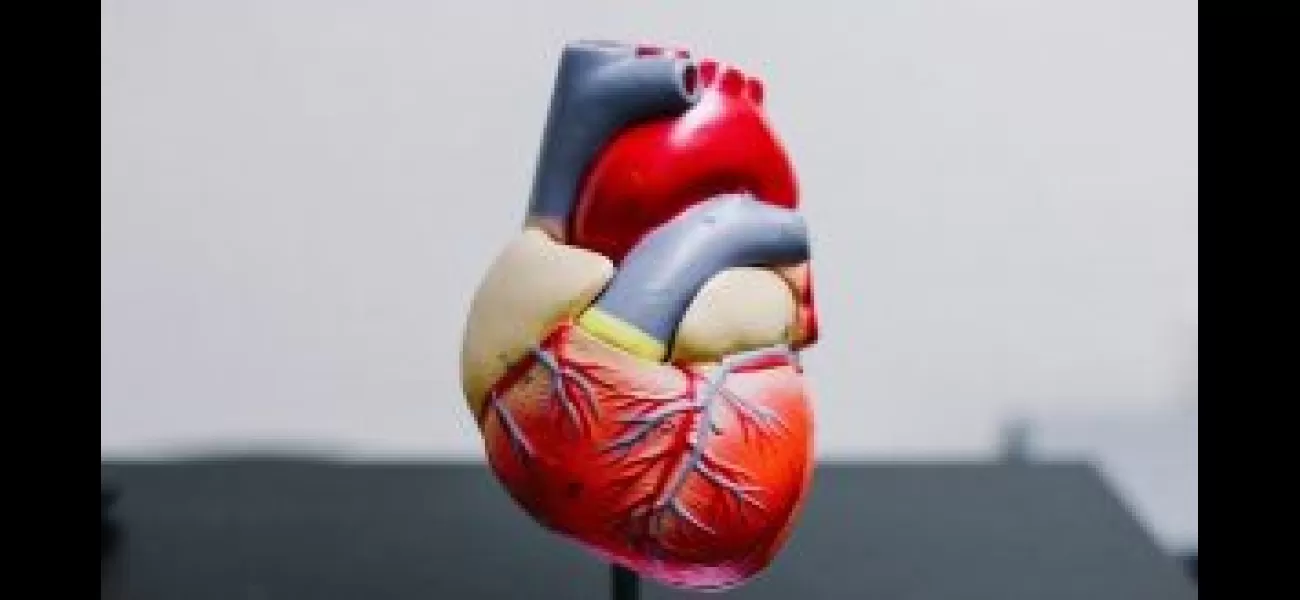Sudden cardiac death, the third leading cause, can occur without symptoms. It is important to be aware of this.
Experts warn about aortic aneurysms, a potentially fatal heart condition which often has no symptoms, urging awareness.
June 30th 2024.

Experts have revealed that aortic aneurysms, a potentially fatal heart condition, often have no symptoms and rank as the third leading cause of sudden cardiac death. Aortic aneurysms occur when the major blood vessel aorta, responsible for carrying blood from the heart to the rest of the body, becomes enlarged like a balloon. While this condition affects only 2 to 3 percent of the population, certain risk factors such as atherosclerosis, hypertension, and genetic deficiencies can increase the chances of developing it.
According to Niranjan Hiremath, a senior consultant cardiovascular and aortic surgeon at Indraprastha Apollo Hospital in New Delhi, aortic aneurysms are a critical yet overlooked health concern. He explained, "When the walls of the aorta weaken, it can expand to two or three times its normal size, putting the patient at risk of sudden rupture which can cause immediate death or aortic dissections, a life-threatening complication."
Despite its severity, aortic aneurysms have not received as much attention as other cardiac risks like heart attacks and cardiac arrests in India. Hiremath expressed concern about the lack of awareness surrounding this condition, especially since 75 percent of aortic aneurysms have no symptoms and are only discovered during routine medical examinations.
Shiv Choudhary, Executive Director of Adult Cardiothoracic & Vascular Surgery at Fortis Escorts Heart Institute in New Delhi, added that most aortic aneurysms do not cause any symptoms until they become larger, which can lead to severe complications if left untreated. He stated, "As the aneurysms grow, patients may experience abdominal or back pain. If left untreated, they can become life-threatening."
Aneurysms can develop in any part of the aorta, but the most common area affected is the abdominal aorta. In addition to the aforementioned risk factors, genetics, trauma, infection, and tobacco use can also contribute to the development of aortic aneurysms. According to Shiv, tobacco weakens the walls of the aorta and can result in rupture or dissection, both of which require emergency treatment.
While open surgery was previously the primary treatment for aortic aneurysms, experts have now shifted towards minimally invasive techniques such as endovascular stent implantation. V S Bedi, Chairman and Senior Consultant at the Institute of Vascular and Endovascular Sciences at Sir Ganga Ram Hospital in New Delhi, stated that this method has a low risk of complications and mortality.
It is crucial to treat aortic aneurysms once they reach a size of 5cm, as an increase to 6cm or more can result in sudden rupture, which can be fatal. Additionally, patients with this condition should strictly control their blood pressure and avoid tobacco in any form. While intense physical activities and isometric exercises should be avoided, light aerobic exercises and walking are recommended for those with diagnosed aneurysms.
In conclusion, experts are stressing the importance of raising awareness about aortic aneurysms and their potential risks, as well as the need for early detection and proper treatment. By taking necessary precautions and undergoing regular medical check-ups, individuals can reduce their chances of falling victim to this fatal heart condition.
According to Niranjan Hiremath, a senior consultant cardiovascular and aortic surgeon at Indraprastha Apollo Hospital in New Delhi, aortic aneurysms are a critical yet overlooked health concern. He explained, "When the walls of the aorta weaken, it can expand to two or three times its normal size, putting the patient at risk of sudden rupture which can cause immediate death or aortic dissections, a life-threatening complication."
Despite its severity, aortic aneurysms have not received as much attention as other cardiac risks like heart attacks and cardiac arrests in India. Hiremath expressed concern about the lack of awareness surrounding this condition, especially since 75 percent of aortic aneurysms have no symptoms and are only discovered during routine medical examinations.
Shiv Choudhary, Executive Director of Adult Cardiothoracic & Vascular Surgery at Fortis Escorts Heart Institute in New Delhi, added that most aortic aneurysms do not cause any symptoms until they become larger, which can lead to severe complications if left untreated. He stated, "As the aneurysms grow, patients may experience abdominal or back pain. If left untreated, they can become life-threatening."
Aneurysms can develop in any part of the aorta, but the most common area affected is the abdominal aorta. In addition to the aforementioned risk factors, genetics, trauma, infection, and tobacco use can also contribute to the development of aortic aneurysms. According to Shiv, tobacco weakens the walls of the aorta and can result in rupture or dissection, both of which require emergency treatment.
While open surgery was previously the primary treatment for aortic aneurysms, experts have now shifted towards minimally invasive techniques such as endovascular stent implantation. V S Bedi, Chairman and Senior Consultant at the Institute of Vascular and Endovascular Sciences at Sir Ganga Ram Hospital in New Delhi, stated that this method has a low risk of complications and mortality.
It is crucial to treat aortic aneurysms once they reach a size of 5cm, as an increase to 6cm or more can result in sudden rupture, which can be fatal. Additionally, patients with this condition should strictly control their blood pressure and avoid tobacco in any form. While intense physical activities and isometric exercises should be avoided, light aerobic exercises and walking are recommended for those with diagnosed aneurysms.
In conclusion, experts are stressing the importance of raising awareness about aortic aneurysms and their potential risks, as well as the need for early detection and proper treatment. By taking necessary precautions and undergoing regular medical check-ups, individuals can reduce their chances of falling victim to this fatal heart condition.
[This article has been trending online recently and has been generated with AI. Your feed is customized.]
[Generative AI is experimental.]
0
0
Submit Comment





